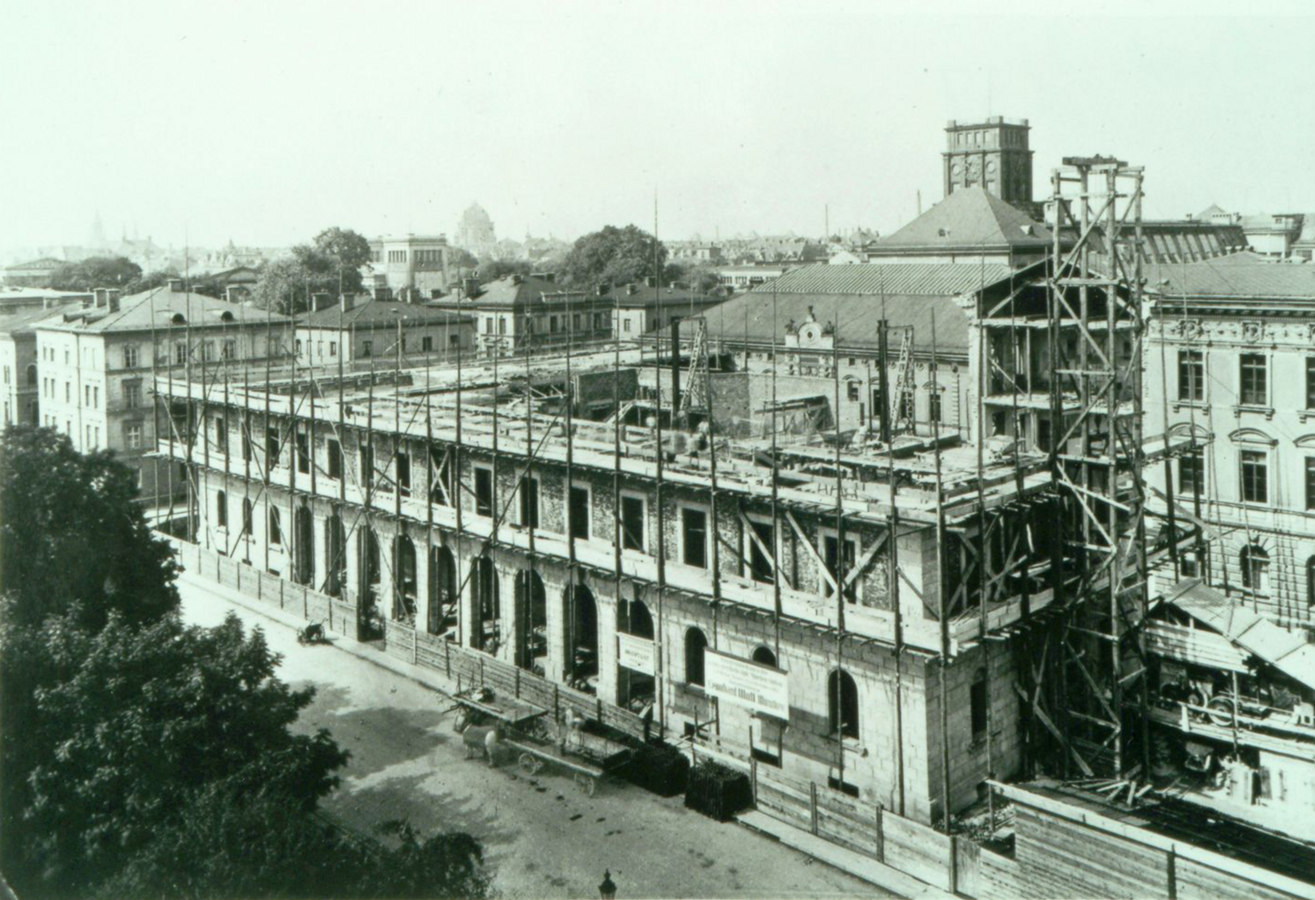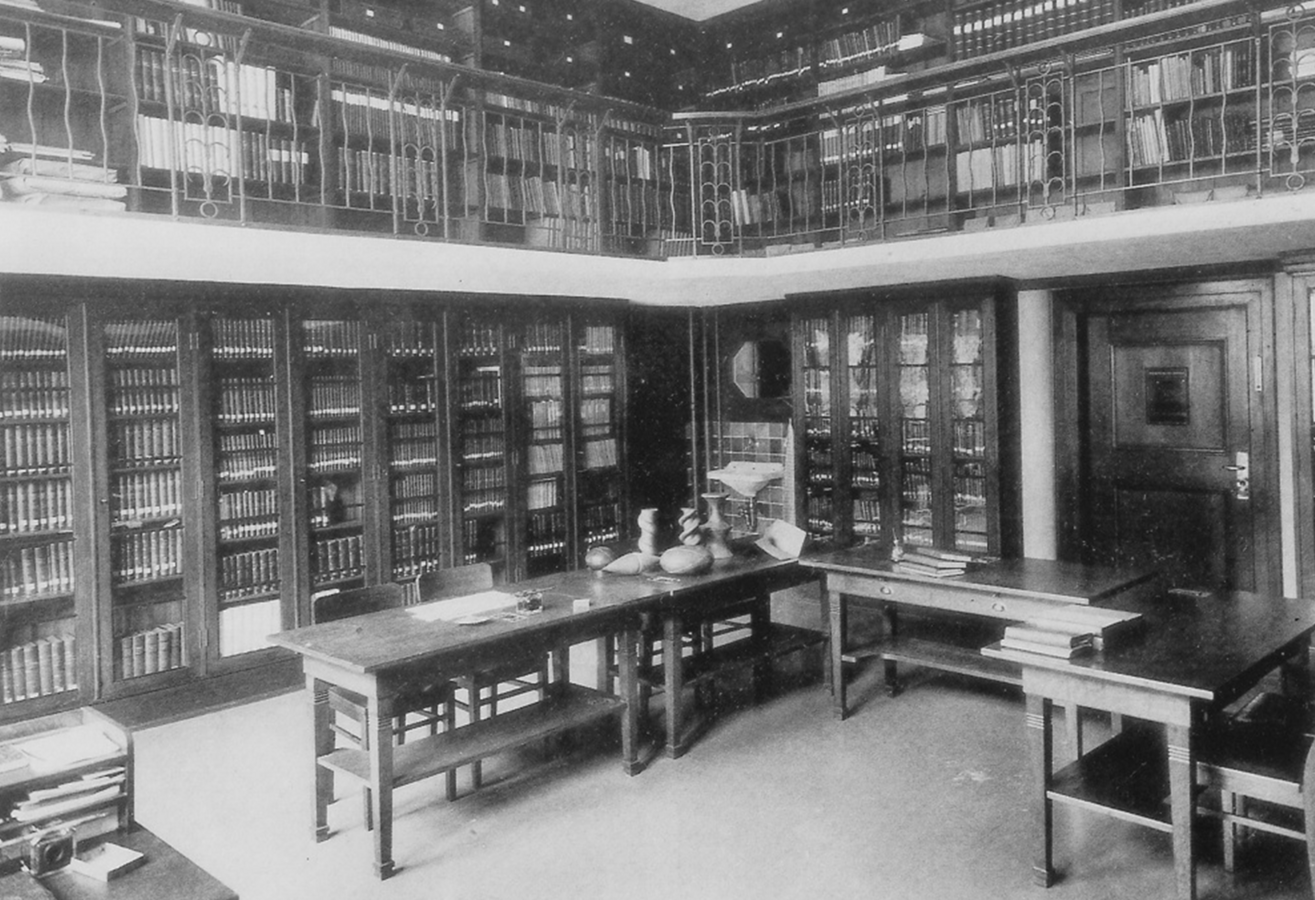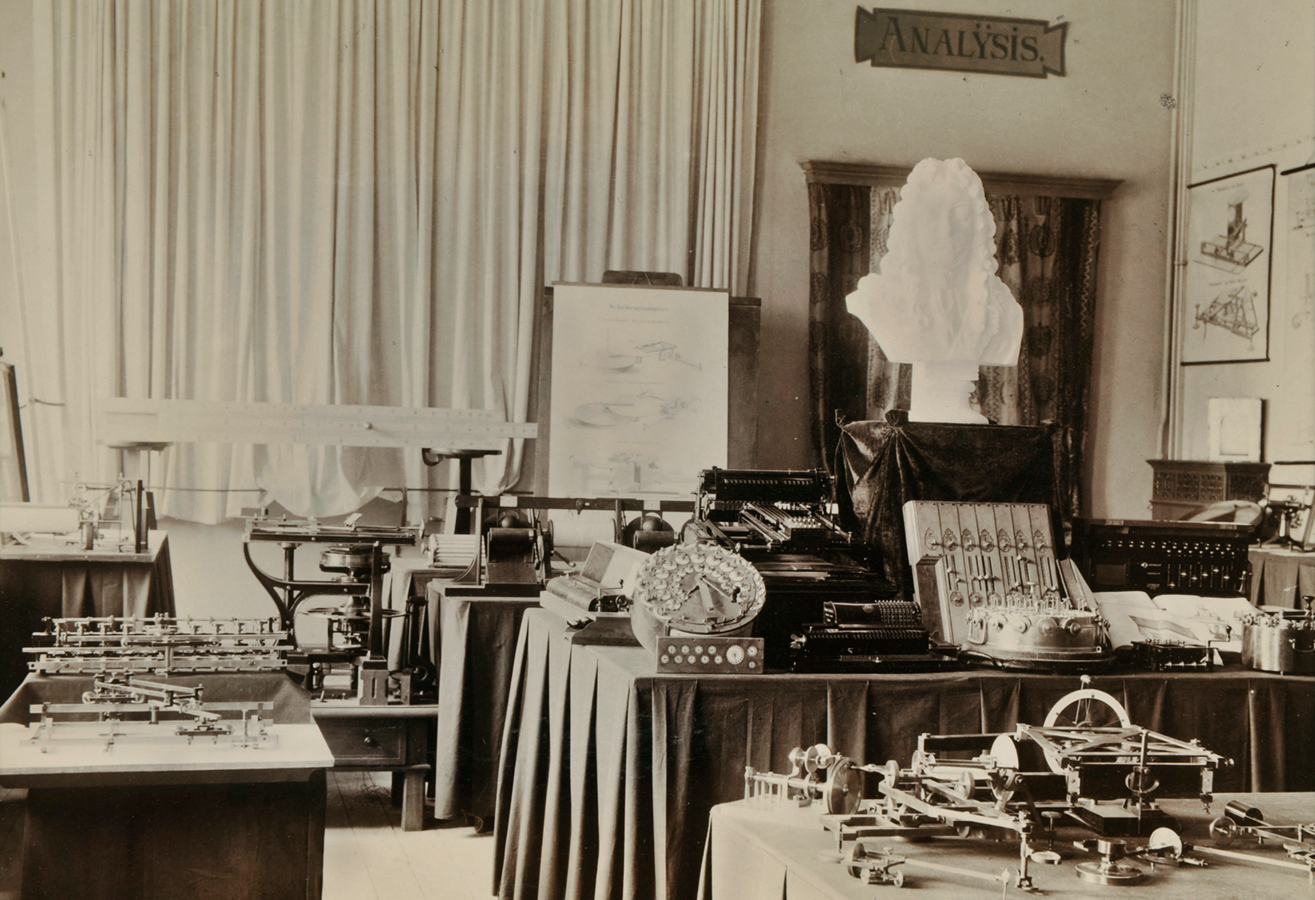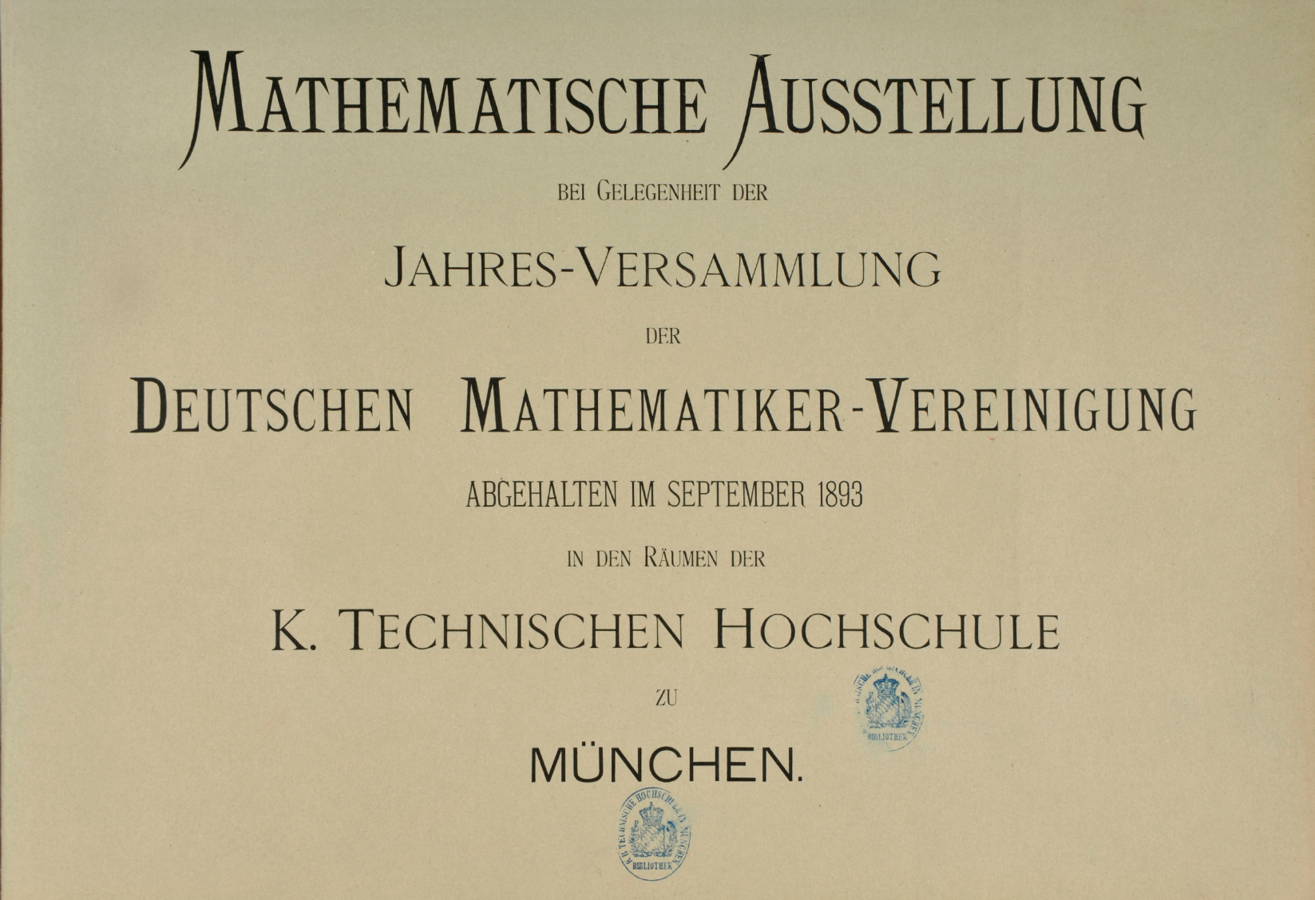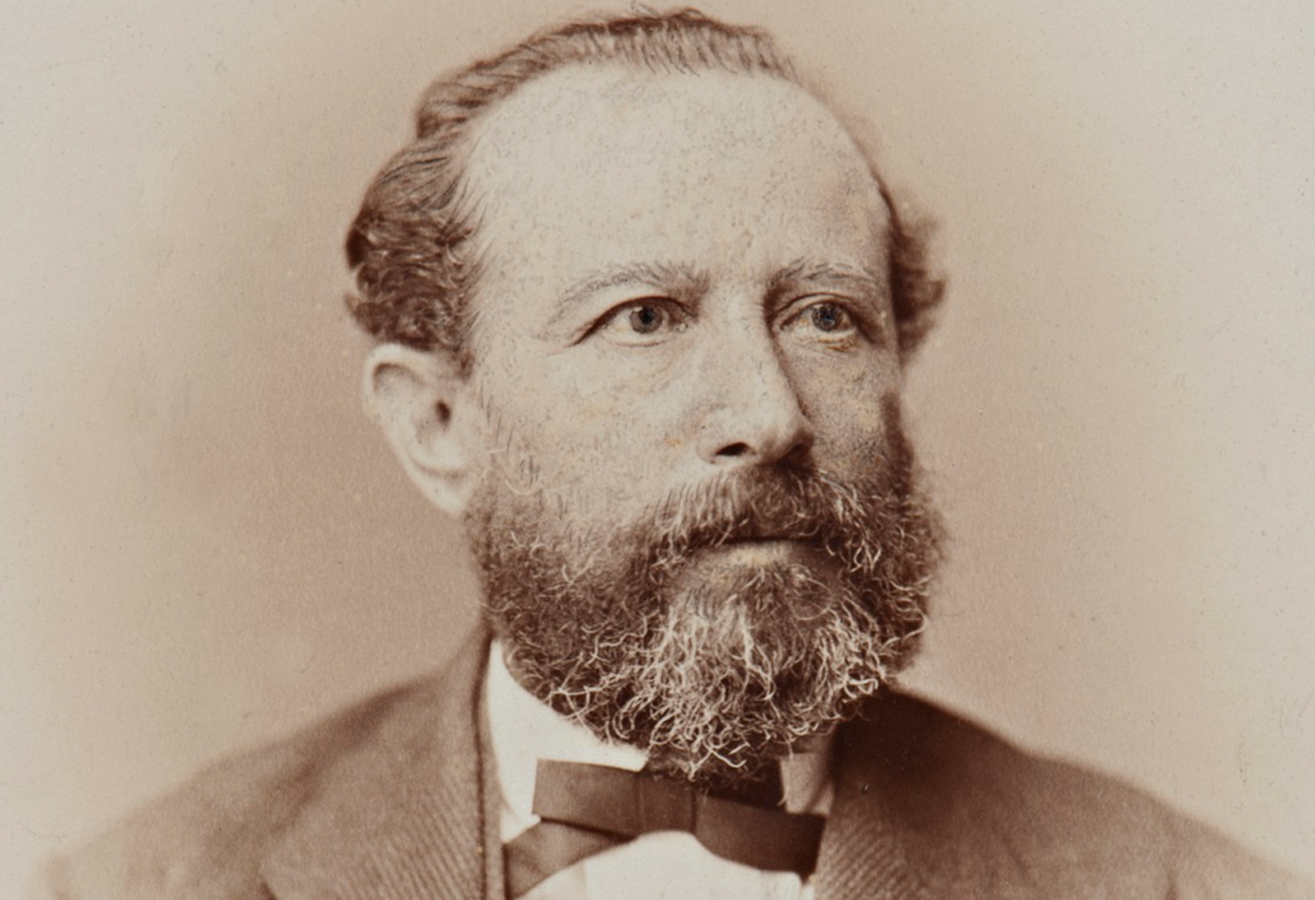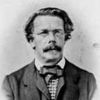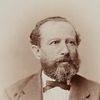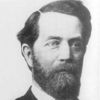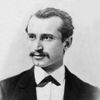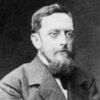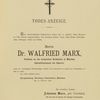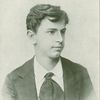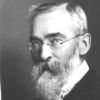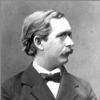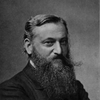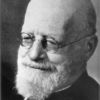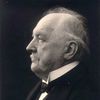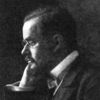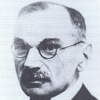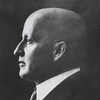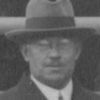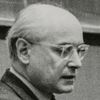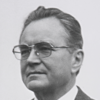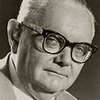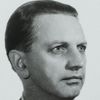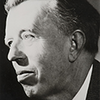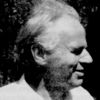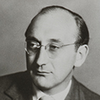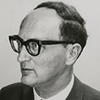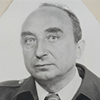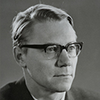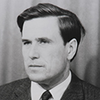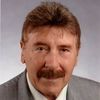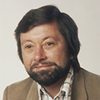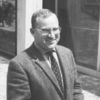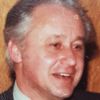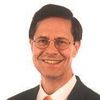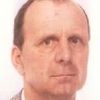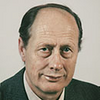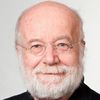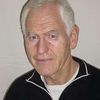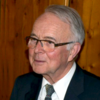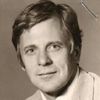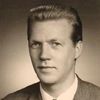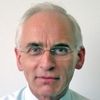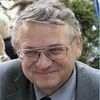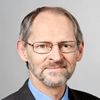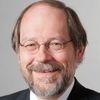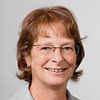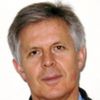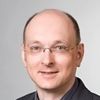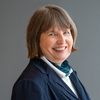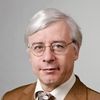The roots of the mathematical sciences reach far back into antiquity. In the Middle Ages, they were cultivated in monasteries, courts and, from the 12th century onwards, in universities as part of the traditions of ancient European and ancient Oriental scholarship. There, they belonged to the quadrivium as arithmetic and geometry within the canon of subjects of the Septem Artes Liberales (seven liberal arts).
Even in the initially non-academic training tradition of the Artes Mechanicae (practical arts), in which craftsmanship as an art was initially in the foreground, engineering training – and with it mathematics – became more and more important, for example in the highly professional mining industry of the Renaissance. Apprentices had to acquire knowledge of mathematics.
Eventually, separate university-like schools were founded solely for the purpose of technical education. As one of those, the Technische Hochschule München (THM) was officially opened in 1868 under the name Polytechnische Schule München (Munich Polytechnic School) after several preliminary stages and already with university status. It was allowed to use the name THM from the academic year 1877/78 onwards.
The following description of the history of mathematics at the Technical University of Munich (TUM) since the foundation of the THM aims not only to list the professorships, but also to highlight "their interconnections in the general history of the state, economy, science and society of their time" (1). In this way, interactions between the development of TUM from a subordinate technical school to an equal partner of the established universities on one hand, and the development of the Department of Mathematics at TUM (until 2022 actually named Fakultät für Mathematik in German language) on the other hand become visible.
The latter developed from a subdivision of the so-called Allgemeine Abteilung (General Department) of the THM, where its main task was the mathematical education of engineers, into a TUM-department in its own right, the Department of Mathematics. As a result, the Department was able to position itself in its scientific communities in terms of cooperation opportunities, competitiveness, prestige and realization of funding opportunities. Since 2022, the Department of Mathematics is integrated into the TUM School of Computation, Information and Technology (CIT).
_____
Source:
(1) Wengenroth, S. VII
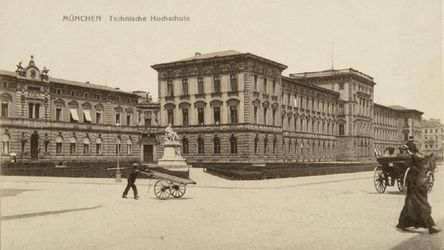
(Photo: TUM Architektur-Museum)
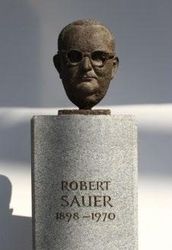
(Photo: TUM)
When the Technische Hochschule of Munich (THM) was founded, Technische Hochschulen (THs) were a novelty in the educational landscape throughout Germany and had to hold their own against the established universities, even if they were formally equal in legal terms. A lot of institutional development work was necessary here - also in association with the THs nationwide.
The further development of the THM in the new format of a TH and its successful integration in the educational landscape served as a framework for the development of the Department of Mathematics at the TUM (key data on the history of the TUM).
Several professors of mathematics participated in this development work as rectors of the THM:
Walter von Dyck
1900 – 1903
In 1901, the THM received the right to award doctorates and the title "Doctor of Technical Sciences". The THs had to fight for the right to award doctorates, despite their alleged formal legal equality with the universities. For THM mathematics professors, the THM's right to award doctorates was of great importance, because without it, their supervised doctoral students had to complete their degrees at the Ludwig-Maximilians-Universität (LMU), so that the scientific achievements of THM mathematics remained invisible. The right to award doctorates was therefore an important prerequisite for the development of an independent research profile beyond service teaching for engineers and the training of teachers.
1903 – 1906
Walter von Dyck was the first elected rector of the THM after the introduction of the rectorate constitution in 1902. His concept of a "scientific TH" shaped the THM for decades.
1919 – 1925
Walter von Dyck once again took over the office of the rector and used his organizational skills and his great influence on members of parliament, cabinet members and ministry officials to bring the THM relatively well through the particularly difficult time after the First World War (Speech for the Dies Academicus of 1920).
Georg Faber
1945 – 1946
Georg Faber had to bear the heavy burden of the first years following the Second World War. Under his rectorate, the reconstruction phase of the THM began. Amongst others, the THM's buildings had suffered considerable damage during the war (Funeral Speech).
Robert Sauer
1954 – 1956
Robert Sauer earned lasting merits through his creative achievements in the modernization of the THM. He further developed the tradition of scientific engineering education established by Felix Klein and Walther von Dyck.
At that time, mathematics began to pave the way for computer science (mathematics of information) as an independent professional discipline. Robert Sauer set the course for the introduction of computer science at the THM. From the cooperation with Hans Piloty as a representative of electrical communications and measurement technology at the THM, the PERM (Munich Program Controlled Electronic Computer) was born. As a representative of the universities in the Bavarian Senate - a second legislative chamber that exists only in Bavaria in addition to the State Parliament - Robert Sauer also had an impact on higher education policy beyond the THM. He initiated the foundation of the Leibniz-Rechenzentrum (Computing Center) of the Bavarian Academy of Sciences. Later he became President of this Academy and First Vice President of the Bavarian Senate.
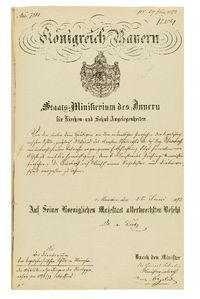
(Photo: TUM.Archiv)
1868
Expansion and relocation of the Polytechnische Schule München to a new building in Arcisstraße: For the first time, a "Program" was presented, which defined the "purpose and structure of the institution" and listed the mathematical sciences among the "subjects taught".
1875
Under the leadership of Professors Klein and Brill, the "Mathematisches Institut" was founded(1).
1877
Appointment as Königlich Bayerische Technische Hochschule zu München (THM) on an equal footing with the state universities: The "Royal Bavarian Technical Highschool of Munich" was the full name of the THM at that time. In the course of the foundation of the THM, which was divided in 6 Departments6, three chairs of mathematics were created as part of the department Allgemeine Abteilung.
1929
Reorganization of the THM into seven departments; incorporation of the Mathematisches Institut and the collection of descriptive geometric models named Sammlung für Darstellende Geometrie into the department Allgemeine Abteilung (2). The foundation of this extensive collection of geometric plaster models and graphic representations for mathematical instruction at universities had already been laid by Professors Brill, Klein and von Dyck.
1957
Foundation of the applied mathematics institute, the Institut für Angewandte Mathematik (3). Before that the Institut für Geometrie, had been founded additionally to the Mathematisches Institut.
1970
The THM is reappointed as the Technical University of Munich (TUM)
1975
Within the framework of a reorganisation of the departments, the department Allgemeine Abteilung was divided into four faculties, the Faculty of Mathematics being one of them. Within this Faculty, the two institutes, Institut für Geometrie und Mathematisches Institut, were merged under the name Institut für Mathematik. In addition, the Institut für Statistik und Unternehmensforschung (Institute for Statistics and Business Research) and the Institut für Informatik (Institute for Computer Science) were established. The development of computer science at TUM – under the umbrella of mathematics – was largely driven by Friedrich L. Bauer, who had been appointed to a newly created chair in the Department of Mathematics. He gave his first lecture on the topic "Einführung in die Informatik" (Introduction to computer science) as early as 1967. The flexible examination regulations for mathematics allowed this new branch of study without any bureaucratic hurdles (4). The term "Informatik" was coined by Friedrich L. Bauer: the word being created from the front part of "information processing" and the rear part of the word "mathematics"
1980
Renaming of the Faculty of Mathematics in Faculty for Mathematics and Computer Science (Fakultät für Mathematik und Informatik in German language).
1982 and 1983
Renaming of the Institut für Statistik und Unternehmensforschung and the Institut für Mathematik in Institut für Angewandte Mathematik und Statistik (Institute for Applied Mathematics and Statistics) and Mathematisches Institut, respectively.
1992
Division into a Faculty of Mathematics and a Faculty of Computer Science (until 2022 Fakultät für Informatik in German language): The Faculty of Mathematics was divided into the following areas:
- Analysis
- Geometry
- Numerical Mathematics and Scientific Computing
- Stochastics
- Algebra and Number Theory
- Discrete Mathematics
- Mathematical Modeling and Partial Differential Equations
- Optimizaton
- Mathematical Models.
1996
Subject-oriented division of the Faculty of Mathematics into initially 13 and eventually 17 M-units, supported by central service areas: Being the only institute established, the Zentrum Mathematik (Center of Mathematics) encompassed the entire faculty (departmental structure). The M-units represented the teaching and research foci of the department:
- Optimization (M1)
- Numerical Mathematics (M2)
- Scientific computing (M3)
- Mathematical Statistics (M4)
- Mathematical Physics (M5)
- Mathematical Modeling (M6)
- Analysis (M7)
- Dynamical Systems (M8)
- Applied Geometry and Discrete Mathematics (M9)
- Geometry and Visualization (M10)
- Algorithmic Algebra (M11)
- Biomathematics (M12)
- Financial Mathematics (M13)
- Probability Theory (M14)
- Applied and Numerical Analysis and Data Analysis (M15)
- Numerical Methods in Plasma Physics (M16)
- Optimal Control (M17)
2022
Integration of the Faculty of Mathematics into the TUM School of Computation, Information and Technology (CIT) under the title Department of Mathematics.
_________
Sources:
(1) Ströhlein 1995, p. 2
(2) Pabst, p. 182
(3) Ströhlein 1995, p. 1
(4) Ströhlein 1993, p. 3
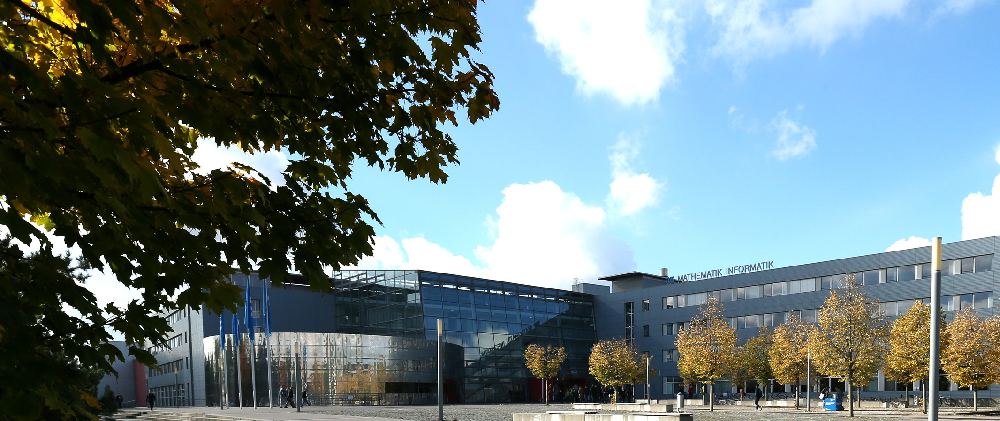
(Photo: TUM)
Parallel to the institutional development, the spatial development also had to be continued.
The first chairs were initially housed in the THM's new building, erected on a vacant site on the Arcisstraße after its foundation. The Polytechnische Schule München was initially located in the Damenstiftstraße. Subsequently, many extensions became necessary.
Around 1925, the so-called Bestelmeyer-Südtrakt (south wing) was newly built, into which the institute Mathematisches Institut was able to move. However, due to the development of the institutes, conditions became increasingly cramped. In 1968, for example, the Institut für Angewandte Mathematik was spread over five locations .The entire Institute of Mathematics then moved to the new building on the so-called bunker site, the Southeast site of the THM on Barerstraße (later: Robert-Sauer-Bauten).
In the 1990s, planning began for a new building at the Garching research site. The Faculty of Mathematics and the Faculty of Computer Science both moved into the new building in 2002.
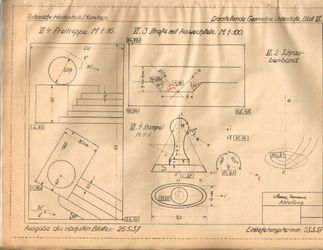
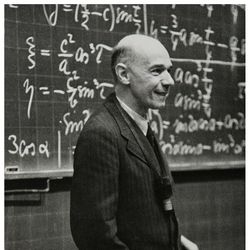
(Photo: TUM.Archiv)
From the outset, the study of mathematics could be pursued and completed at the THM, founded in 1868, in the same way as at a university – for a long time a novelty for THs in Germany. The basic mathematical training had to be broadly based and cover many areas of training at the same time (p 3 at the bottom of the scan). The studies were orientated to the training needs of engineers. The problem of having to supply different disciplines with mathematical teaching was solved by the directors Klein and Brill of the Mathematisches Institut, newly created in 1875, by introducing the four-semester lecture cycle entitled Höhere Mathematik I-IV (Advanced Mathematics I-IV), which at that time also largely characterized external curricula (1). This tradition of a scientifically orientated engineering education, started by Klein and von Dyck, continues at TUM today as a major focus of teaching. Today, students of all disciplines at TUM have to attend (specialised) mathematics lectures as part of their basic curricula, which, with few exceptions, are offered by lecturers of the Department of Mathematics (service teaching).
With the new structuring of the Faculty in 1996 into subject-orientated sections and the introduction of innovative diploma programs such as Industrial Mathematics, Business and Financial Mathematics or Biomathematics, the Faculty of Mathematics explicitly committed itself to an application-oriented and computer-based mathematical profile in research and teaching, without neglecting the mathematical foundations. This not only underscored its position as an important cross-sectional faculty at a technical university, but also gave it a unique position amongst all mathematics departments at Bavarian universities.
In the following years, this profile made the TUM a highly attractive training center for mathematics graduates and was also reflected in the training of teachers for Gymnasien (German high schools) in mathematics, which, after an interruption, this was resumed in the winter semester 1984/85.
As a result of the implementation of the Bologna Process, from 1999 onwards the diploma courses were gradually replaced by corresponding consecutive courses with Bachelor's and Master's degrees. Since then, TUM has offered a single basic mathematics bachelor's degree program.
Additionally, in 2004 the individually tailored elite degree program "Mathematics with Doctorate (TopMath)" was established as part of the newly founded Bavarian Elite Network. By 2021, a further Elite master's program, "Finance & Information Management (FIM)," was offered jointly with the University of Augsburg.
__________
Sources:
(1) Ströhlein 1995, p. 2
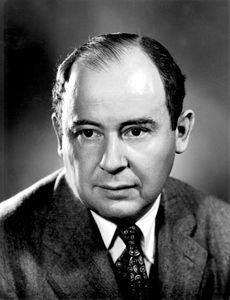
(Photo: Public Domain)
Effects of the regime on academic life
The dictatorship of National Socialism took hold of academic life through student fraternities and university legislation, controlled academic operations, and thus also determined the atmosphere of the Munich university landscape (1).
Instead of openly opposing the Nazi regime, the Munich mathematicians of the LMU and the THM applied different tactics in order to minimize interference by the regime and to continue their teaching and research as unharmed and trouble-free as possible. For example, no new professorships in mathematics were advertised during this period, as the positions could only be filled by persons loyal to the regime (see Gallery of Professors below with a gap in new appointments from 1934 - 48). Since the mathematical sciences escaped direct appropriation for the objectives of the terror regime, they were not the focus of the Nazi regime's attention. This limited the encroachments of the dictatorship, but did not prevent them.
Jewish mathematicians during the Nazi regime
Jewish mathematicians throughout Germany could not escape the new wave of anti-Semitism already fueled by World War I, which the Nazi dictatorship took to new heights, even though mathematical sciences were of secondary importance to the regime (2). Emigration, death in concentration camps and suicide were the consequences throughout Germany (3). But despite the repressions, Jewish mathematicians remained scientifically active (4).
The solidarity of the Munich mathematics professors with their Jewish colleagues was great, as Friedrich L. Bauer's example of a regular meeting called the "Mathematisches Kränzchen" shows. However, they could only protect their colleagues to a limited extent, as the example of the LMU mathematician Pringsheim – the father-in-law of Thomas Mann – shows, who fell into the clutches of the Nazi dictatorship because of his valuable art collection and died 1941 impoverished in exile in Zurich (5). The Jewish LMU mathematician Hartogs even chose suicide in 1943 (6) and the THM mathematician Liebmann was made unable to practice his profession (7).
________
Sources:
(1) Herrmann 2010
(2) Huckle, p. 5
(3) dto., p. 4
(4) dto., p. 15
(5) Bauer 1993, p. 11
(6) dto, p. 16
(7) dto, p. 14
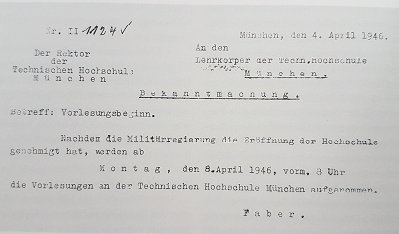
(Photo: TUM.Archiv)
The victorious Allies appointed the mathematics professor Faber, who had not cooperated with the Nazi system, as the first rector of the THM after the end of the war. The restart took place under the close supervision of the military government – so permission even had to be obtained for the mathematics colloquium.
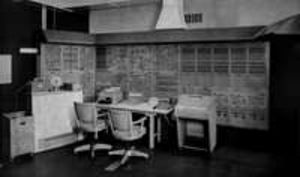
(Photo: Department of Computer Science, TUM)
Designing and constructing calculating machines looks back on a long tradition. First mechanical and then electrical calculating machines were developed on the basis of different mathematical research in various scientific fields – initially without the awareness of founding a new science (Bauer: "40 Jahre Informatik in München: 1967 - 2007", Introduction). In 1956, PERM was put into operation (History of the computing center, Leibniz-Rechenzentrum). The scientific field of computer science eventually developed out of mathematics and was initially represented exclusively by mathematicians in research and teaching, including at the THM. At the instigation of Friedrich L. Bauer, the THM established the first computer science course of studies in 1967. (Interview mit F.L. Bauer von 1995).
The separation of the two departments also changed the structures for the Faculty of Mathematics and necessitated a complete realignment in the areas of research, teaching and organization. At the same time, the two faculties remained spatially close together and cooperated closely. A new generation of research-oriented professors was part of this reorganization and implemented it (see Gallery of Professors). They were appointed in the 1990s with the aim of building a future-oriented and competitive profile. Regarding the new conception, in 1999, the "Reform Department" project was started, in the course of which the external organization "Centrum für Hochschulentwicklung" supported the Faculty of Mathematics in its further development.

The parabolic slide as art in construction was built according to the formula: z = y = h/d2x2
The separation into the Faculty of Mathematics and the Faculty of Computer Science was associated with a considerable loss of resources for the former. In this situation, the Faculty of Mathematics found in the then President of TUM, Professor Wolfgang A. Herrmann, a highly open-minded and well-meaning advocate for mathematics. He supported the reorientation of the faculty from 1996 onwards by generously increasing the budget and approving additional professorships, including new chairs. In addition, the faculty increasingly applied for external funding, which contributed to an increase in staff. This led to significant problems with housing in the Robert-Sauer-Bauten, i.e. in the buildings on the southeast campus of TUM. As in the late 1960s, the Faculty of Mathematics was soon again spread across several locations in Munich's Maxvorstadt district. The situation was no different for the Faculty of Computer Science.
At the end of the 1990s, things moved quite quickly: the federal government at the time had set up a funding program under which a new university building constructed by a private developer could initially be leased for a certain period of time before final purchase by the public sector. This program ultimately enabled the financing of the new Garching building for the Mathematics and Computer Science Faculties by the Free State of Bavaria. In 2002, the two faculties were able to move into the new building together (1).
With the move to the new building, the Faculty of Mathematics was provided with excellent working facilities in close proximity to the Faculty of Computer Science: WLAN throughout the building, computer pool rooms – also for students, networked computers, lecture halls with modern multi-media equipment, interactive teaching opportunities. Collaboration with the Faculty of Computer Science continued to be close. However, a growing number of staff in both faculties meant that even the new building was too small after a few years, so that parts of the two faculties had to be outsourced, for example Mathematical Statistics (M4) and Financial Mathematics (M13) in rented rooms in a building on the business campus in Garching-Hochbrück.
________
Sources:
(1) see also Bauer 2007, S. 233ff
The application of mathematical approaches and concepts is no longer limited to scientific disciplines traditionally related to mathematics, such as computer science, physics and engineering. Modern mathematical models and methods are increasingly being used with great success in chemistry, biology and medicine as well as in economics. Moreover, mathematics is a key technology of the economy today. In the era of high-technology and globally connected production and supply systems, mathematics is more in demand than ever: semiconductor and automotive technology, design and operation of high-speed networks, genetic engineering, medical technology, climate research and materials science are just a few examples where mathematics is needed.
At many universities, however, research and teaching are still limited to inner-mathematical content (Pure Mathematics). In contrast, in the mid-1990s, the TUM Faculty of Mathematics explicitly committed itself to an application- and computer-oriented profile (Applied and Computer-aided Mathematics). It was their mission to build a bridge between the theoretical understanding of mathematics and practical applications through their special professional orientation. Today, the faculty of the Department of Mathematics at TUM not only does research and teaches in the classical fields of mathematics such as algebra, analysis, geometry, numerics or probability theory. Rather, this department is one of Europe's leading centers in the field of Applied and Interdisciplinary Mathematics. To a large extent, the research is oriented towards problems from the real world, whereby the mathematical foundations are not neglected. This interweaves TUM mathematics with many other scientific disciplines as well as with various branches of industry and business (interdisciplinarity), takes into account the universal character of mathematics as a fundamental scientific discipline, and copes with the current challenges of our time.
In the mid-1990s, the Faculty of Mathematics at TUM began to position itself consistently and very broadly in the direction of Applied and Computational Mathematics, which still shapes its scientific profile today. The division of the faculty into M-units (mathematical research and teaching units) with corresponding research and teaching priorities (cf. the list in the above section "Institutional Development of Mathematics at the THM/TUM") as well as the introduction of a department-like administrative structure with the single institute Zentrum Mathematik encompassing the entire faculty, created the structural basis for that. The M-units were based on a scientific focus. All professors of the faculty were assigned to the M-units together with their research groups according to their respective subject focuses. In addition, the scientific focus of the M-units served as a guide for the dedication of professorships to be filled or newly established. Information on the personnel changes in the professorship that went hand in hand with this can be found in the article "Zur Genealogie der Mathematikprofessuren an der TUM seit den 1990er Jahren" (see list of sources below; in German).
_______
*Information on further developments can be found on the CIT website; information on the development up to 1990 can be found in Ströhlein 1995 (see list of sources).
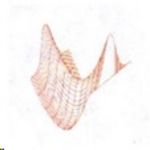
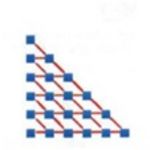
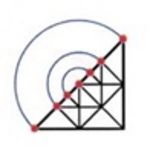
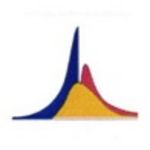


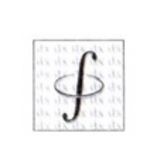
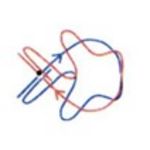
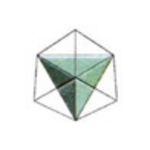

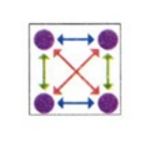
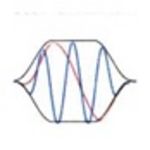
Subsequently, a rough specification of the scientific profile of TUM Mathematics follows, including selected research priorities related to the M-units. The paragraph in the text dedicated to an M-unit is preceded by the former logo of the M-unit concerned, where available. It is to be noted, that the structure of the faculty has been revised and the division of professors together with their research groups has been redesigned according to mathematical research fields in mid-2017. The development in recent years, especially with regard to the narrower research areas currently represented at the CIT-Department of Mathematics founded in October 2022, can be traced on the CIT website.
Optimization (M1)
Mathematical Optimization is concerned with finding the best possible solutions to a wide variety of problems. Often, the goal is to minimize energy or costs in given scenarios or to maximize the return on an investment or to use existing resources efficiently. This requires the quantitative analysis of the underlying technical and economic processes. The methodological core of corresponding modeling approaches and simulation algorithms is often mathematical. One research focus at TUM is the development of efficient methods for solving large-scale nonlinear optimization problems that arise, for example, in connection with the shape optimization of solids or with the control of fluids.
Numerical Mathematics (M2)
A central component of the profile of TUM Mathematics is Numerical Mathematics. It deals with the development and analysis of algorithms for solving mathematical problems, with the implementation of those algorithms on digital computing machines (computers) as well as with applications to explore scientific and technical questions from many different fields in mathematical terms. Important focal points at TUM are the treatment of control problems from Aerospace and Automotive Engineering or Robotics. Mathematical models are often given by differential equations, which are discretized in a suitable form for the purpose of finding approximate solutions by implementation of corresponding approximation algorithms on computers.
Scientific Computing (M3)
Scientific Computing is a modern offshoot of Numerical Mathematics. Efficient and accurate algorithms are designed, analyzed and implemented here on modern high-performance computers for a wide range of problems. Often the task is to reproduce, predict and control highly complex processes in nature or technology with the help of computer simulations and to estimate process parameters. However, important practical problems are usually so complex that relevant progress can only be achieved in interaction with various subfields of Mathematics and other sciences as well as with the application areas. Corresponding mathematical models are often given by partial differential equations or also by so-called algebro-differential equations. For instance, the latter allow to consider a-priori given relations among the state variables in system and process modeling.
Mathematical Statistics (M4)
Mathematical Statistics is, by its very nature, practical. It is an applied offshoot of Probability Theory (mathematics of uncertainty) and together with it plays a role in almost all areas of life. Statistics includes quantitative methods to extract information from data (data mining). In this process, data is considered to be random. An important subfield represented at TUM is quantitative risk management, in which mathematical methods for risk analysis and risk measurement are developed. A significant special case is risk modeling for time series data and high-dimensional network data. A concrete application is risk quantification in the insurance and financial sector or in aviation or also concerning climate and environmental protection.
Mathematical Physics (M5)
Mathematical Physics deals with mathematical problems that have their motivation or application in (Theoretical) Physics. Of particular importance are, on the one hand, the mathematically rigorous formulation of physical theories and the analysis of underlying mathematical structures, and, on the other hand, the application of mathematical concepts and solution methods to physical problems. This includes Statistical Physics, through which systems of many (stochastically) interacting particles, stochastic growth processes and interfacial dynamics are described. Some relevant subfields of Mathematics are Applied Probability Theory as well as the theories of stochastic processes and random matrices. Quantum Physics describes quantum systems, i.e. interacting particle systems on atomic scales. Their mathematical formulation uses, among other things, spectral theory of unbounded operators on Hilbert spaces, in particular spectral theory for Schrödinger operators.
Mathematical Modeling (M6)
One focus of Mathematical Modeling is the analysis and control of complex processes and intelligent systems in nature and technology based on concepts from the relevant natural sciences and using mathematical methods. Examples are material-oriented processes such as the (thermo-visco-) elastic or plastic deformation of materials, phase transitions, heat and wave propagation in various media, or the spreading and interaction of populations of certain species in living nature. The model equations are often differential equations. Besides their derivation, relevant questions concern the existence and properties of their solutions. Both Applied Analysis, especially calculus of variations, and Numerical Mathematics are relevant subfields of Mathematics here. A special challenge is posed by systems and processes that have a kind of memory, i.e., their current behavior is influenced by their past behavior. In this case, hysteresis operators play an important role for mathematical modeling.
Analysis (M7)
While numerical methods deliver mathematical results in the form of numbers, concepts and methods of Analysis can be used, for example, to derive formulas or to prove the existence and special properties of solution functions of a model equation without having to solve the latter explicitly. Application-relevant subfields of Analysis are function theory, differential and integral calculus, measure theory, calculus of variations, Fourier analysis, functional analysis, approximation theory and operator theory. Analysis forms a foundation of many mathematical disciplines and constantly interacts with concrete questions from various application areas. Research interests at TUM include the analysis of the electron structure of atoms and molecules, calculus of variations, molecular dynamics, multiscale methods, and nonlinear waves.
Dynamical Systems (M8)
In the middle of the 20th century, the subject of Dynamical Systems started to flourish as a subfield of Mathematics again. One topic that received much public attention in the 1970s and 1980s is nonlinear dynamics, casually also referred to as Chaos Theory. The focus is on the mathematical analysis and prediction of the evolution over time of complex systems and processes (mathematics of time). Typical examples are the motion of a rigid body or of components of a system of rigid bodies, the deformation of special materials or the flow of certain fluids. Concepts and methods of the mathematical theory of dynamical systems allow in particular to investigate phenomena of a qualitative nature such as questions about the stability of evolution patterns over long and even arbitrarily long time intervals or potential changes (bifurcations) of an evolution pattern in case of its instability, inclusively the transition to chaotic behavior.
Applied Geometry and Discrete Mathematics (M9)
Discrete structures often play a prominent role in practical applications. Applied Geometry and Discrete Mathematics are an indispensable part of the current profile of TUM Mathematics due to their close connection to algorithmic problems such as route planning and scheduling in public transport, chip layout, discrete tomography or data analysis. The research covers fundamental aspects of Discrete Mathematics and applications to the analysis and algorithmic treatment of practical problems from the Natural Sciences, Engineering, Economics, and Finance, with particular interest in optimization issues. There is a close connection to the mathematical disciplines of Combinatorics and Graph Theory. Concrete applications investigated at TUM are, for example, the optimal planning of land consolidation or of tram schedules.
Geometry and Visualization (M10)
Geometry focuses on fundamental aspects of geometric patterns and structures as well as on concrete applications that require a deep geometric understanding to analyze or visualize underlying patterns. With the help of Computer Graphics, real objects and processes such as figures or solids and their movements, respectively, can be represented in a clear manner, and many abstract structures and facts can be visualized geometrically. In particular, this is a means of gaining new mathematical insights (experimental mathematics) or presenting mathematical solutions and results impressively (computer simulation). Here, Mathematics, Computer Science and Electrical Engineering often interact intensively.
Algorithmic Algebra (M11)
Like Analysis and Geometry, Algebra is one of the fundamental branches of Mathematics. It deals with properties of arithmetic operations based on special algebraic structures such as groups, rings or fields. The latter are sets of certain objects (elements), usually abstract in nature, for which arithmetic operations and relations are specified in a manner which is consistent with a set of basic assumptions (axioms). Nowadays, there is even the possibility of calculating with such objects using computers, i.e., of systematically manipulating arrays of symbols according to given rules with the aid of computers (Computer Algebra). Thus, for example, certain equations can be solved exactly or even mathematical proofs can be carried out automatically. Algorithmic Algebra is concerned with the search for corresponding algorithms and the determination of their efficiency. Algebraic Geometry deals with relations between algebraic and geometric structures in order to deepen the understanding of both.
Biomathematics (M12)
The aim of Biomathematics is to develop mathematical models and theories to describe or predict the structure and dynamics of systems and processes from living nature. A particular objective is to discover, through abstraction, principles and mechanisms underlying the development and interaction of living organisms. Due to the considerable complexity of living systems, this approach is becoming increasingly important in Biology and other areas of the Life Sciences, including Medicine. Here, many mathematical disciplines interact. Today's findings in Ecology, Epidemiology, Neurology or Evolutionary Theory are inconceivable without Mathematics. Modern health care and personalized medicine also rely on mathematical-statistical models and methods. Since 1997, there have been faculty members simultaneously holding positions at TUM Biomathematics and at the Institute for Biomathematics and Biometry at the Helmholtz Center Munich.
Financial Mathematics (M13)
Financial Mathematics provides access to the complexities of finance. For example, mathematical instruments are developed to determine fair commodity prices, stock prices, and interest rates, or to model loans and insurance products. This in particular helps to evaluate options, quantify financial risks and figure out optimal investment strategies. Methodologically, Financial Mathematics uses a very broad repertoire of techniques from Stochastics, Statistics, Numerics, Optimization, and Analysis.
Probability Theory (M14)
Probability Theory (mathematics of uncertainty) investigates how likely it is that a random event will actually occur. It is used in fields such as Economics or Computer Science. In addition, it has numerous connections to other areas of Mathematics such as Analysis, Graph Theory and Mathematical Physics. Last but not least, with its offshoot, Mathematical Statistics, it forms the area of Stochastics. Stochastics has a significant impact on our everyday life. It deals with stochastic processes and their long-term behavior. Research foci at TUM include so-called random walks in random networks and environments as models for transport in inhomogeneous media. Other probabilistic models which are studied, help to better understand the dynamics of complex biological systems or to study randomized processes in signal processing and data analysis.
Applied and Numerical Analysis and Data Analysis (M15)
Whether in Logistics, Medicine or Mobile Communications – many applications lead to ever increasing data sets. In order to analyze and efficiently use these data sets, suitable mathematical tools are more and more needed. These tools can be used to make forecasts, save resources and reduce costs in many application areas. A particular challenge is posed by very large data volumes, not least for reasons of data storage. Here, mathematical concepts for data compression are of particular importance.
Numerical Methods in Plasma Physics (M16)
One of the greatest challenges of mankind is the search for environmentally and climate friendly as well as economically acceptable solutions to the energy problem. In this context, nuclear fusion is a promising physical principle, although there are considerable difficulties in implementing this principle successfully from a technological point of view. Among other things, Plasma Physics deals with fundamental problems that arise in fusion research. Of particular importance are
- on the one hand, the mathematically rigorous formulation of corresponding physical theories and the analysis of underlying mathematical structures, and
- on the other hand, the application of mathematical solution methods and strategies to solve resulting mathematical model equations.
Due to the enormous complexity of these equations (kinetic models, in case of magnetic fusion also models from Magnetohydrodynamics), numerical solution methods play a prominent role here. It is important that the approximation algorithms used reproduce essential structural features of the exact solutions, at least in sufficient approximation, including symmetries and the existence of quantities which are conserved along the solutions. This poses a big challenge for the choice or development of suitable solution methods. In particular, concepts of Differential Geometry and the theory of Lie groups are used here. The head of the M16-unit simultaneously holds a director position at the Max Planck Institute for Plasma Physics in Garching.
Optimal Control (M17)
One research focus is the development of efficient numerical algorithms for optimal control of complex processes in nature and technology. The theory of optimal control is closely related to the theory of optimization and to calculus of variations. An optimal control strategy is mathematically described by an input function that minimizes or maximizes a given objective function under a differential equation constraint and possibly other constraints.
For example, if one wants to heat a room in an energy-efficient manner, one might specify the objective to use as little fuel as possible. How does one change the setting of the heating system from time to time during a given period of time in order to achieve that goal? In a mathematical model, it is relatively easy to vary the input function describing the time course of the setting and thus derive a determining equation for optimal controls, i.e., for input functions that minimize the total fuel supply for the heating system during the time period considered. Here, certain constraints must be met, for example that the temperature should not exceed or fall below certain limits anywhere in the room. Starting from a given spatial temperature distribution at the initial time and imposing suitable boundary conditions, the evolution of the temperature in the room over time could be modeled mathematically by means of a heat conduction equation with forcing depending on the heating. The boundary conditions depend in particular on the heat permeability of the walls, doors and windows, and of course temporary ventilation periods must also be taken into account.
Mathematics professors from the foundation in 1868 to 2000
It is often neither institutionally nor scientifically possible to assign professorships to mathematics retrospectively since the early days after the foundation of the THM: Institutionally, most of the mathematics professorships were assigned to the General Division. Others belonged to other divisions, such as August Klingenfeld, who was a full professor of Descriptive Geometry and Mechanical Technology in the Department of Mechanical Engineering (Ströhlein 1995, p. 2). Scientifically, the demarcation to various engineering disciplines was fluid – see the integrated CVs in the Gallery of Professors. At that time an individual professor did not necessarily perceive himself as as a mathematician. The highest formal criterion for the assignment to mathematics remains the dedication of the professorship documented in the Gallery of Professors, but sometimes it was so broad that it eludes scientific and institutional assignment.
The assignment of professorships to mathematics in the following Gallery of Professors is therefore made here with the help of two sources on the genealogy of mathematics professorships: Hashagen's Overview from the founding to 1945 and an internal document from the department. This results in the list of professorships from the foundation to 2000.
History of TUM
Literature used:
Hashagen, Ulf: Walther von Dyck: (1856 - 1934) - Mathematik, Technik und Wissenschaftsorganisation an der TH München, Munich 2003
Herrmann, Wolfgang A. (Ed.): Technische Universität München – Die Geschichte eines Wissenschaftsunternehmens, Band 1 und Band 2; Author: Martin Pabst und Margot Fuchs, Munich and Berlin 2006
Herrmann, Wolfgang A.: Die TUM in der NS-Zeit, Munich 2010
Herrmann, Wolfgang A. und Nerdinger, W. (Hg.): Die Technische Hochschule München im Nationalsozialismus, Munich 2018
Meilensteine aus der Geschichte der Technischen Universität München (TUM)
Wengenroth, Ulrich (Hg.): Die Technische Universität München, Munich 1993
History of the Department
Sources used:
Bauer, F.L.: Interview zu Kryptologie-Vorlesungen 1995: see Schönherr, Maximilian
Genealogie der Mathematikprofessuren, internal overview without fakultätsinterne grafische Darstellung without specifying author and year
Sources of the departmental history collected by Dr. Bruno Riedmüller (accessibly via the TUM.Archiv)
Riedmüller, B.: Beiträge zur Geschichte des Instituts für Angewandte Mathematik - Festschrift zum 70. Geburtstag von Institutsleiter Heinhold, Munich 1982 (accessibly via the TUM.Archiv)
Schönherr, Maximilian: Interview mit F.L. Bauer zu seinen frühen Kryptologievorlesungen, 1995
Ströhlein, Th.: Fakultät für Mathematik und Informatik der TUM - Zur Geschichte der Fakultät, München 1989 (available at the branch-library mathematics-informatics)
Ströhlein, Th. u.a.: Die Geschichte der Mathematik an der TUM, pdf, Stand 1995
Vorlesungsverzeichnis der THM 1877-1878: Organisationsstruktur der Hochschule, Allgemeine Abteilung, Digitalisat der Bayer. Staatsbibliothek
Vorlesungsverzeichnis der Polytechnischen Schule von 1868, digitized by bayer. Staatsbibliothek
Literature used:
Bauer, F.L.: Pringsheim, Liebmann, Hartogs - Schicksale jüdischer Mathematiker in München, Munich 1997
Bauer, F.L. u.a.: 40 Jahre Informatik - Festschrift, Munich 2007
Fakultätsschrift 1993, website in the webarchive (links are no longer maintained) as of 1993 (contains Die Geschichte der Mathematik an der TUM)
Geschichte der Mathematik an der TH München, brochure, Munich 2003
Hashagen, Ulf: Walther von Dyck: (1856 - 1934) ; Mathematik, Technik und Wissenschaftsorganisation an der TH München, Munich 2003
Huckle, Thomas: Mathematiker der NS-Zeit, Munich 2003
Scheurle, Jürgen: Zur Genealogie der TUM-Mathematikprofessuren seit den 1990er Jahren, Munich 2022
Schönherr, Maximilian: Interview mit F.L. Bauer zu seinen frühen Kryptologievorlesungen, 1995
Further Sources:
Dyck-Nachlass-Akte of the Bayer. Staatsbibliothek (Table of Contents)
Further Reading:
Bode, Arndt et al.: 50 Jahre Universitäts-Informatik in München, Tübingen 2017 (Springer)
Schmidt, Gunther: Rückblick auf die Anfänge der Münchner Informatik, Tübingen 2020 (Springer)
Seidl, Ernst; Loose, Frank; Bierende, Edgar (Hg.): Mathematik mit Modellen: Alexander von Brill und die Tübinger Modellsammlung, Tübingen 2018
University History:
Ellwein, Thomas: Die deutsche Universität - vom Mittelalter bis zur Gegenwart, Wiesbaden 1997
Rüegg, Walter (ed.): Geschichte der Universität in Europa (4 Bände); Band 3, S. 488 - 513: Technische Hochschulen, München 2004
Weber, E. J.: Geschichte der europäischen Universität, Stuttgart 2002
Photo Credits:
For the portraits inthe Gallery of Professors, all other ©-notices can be found below each picture.
